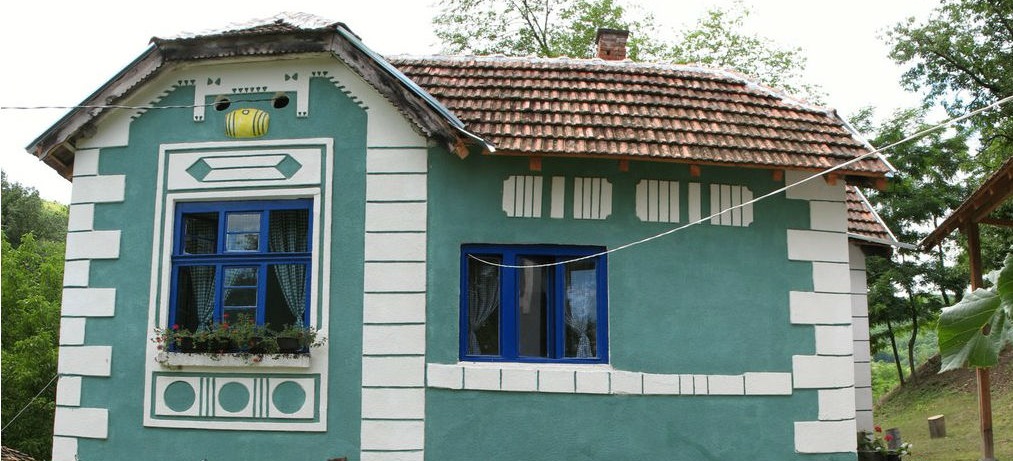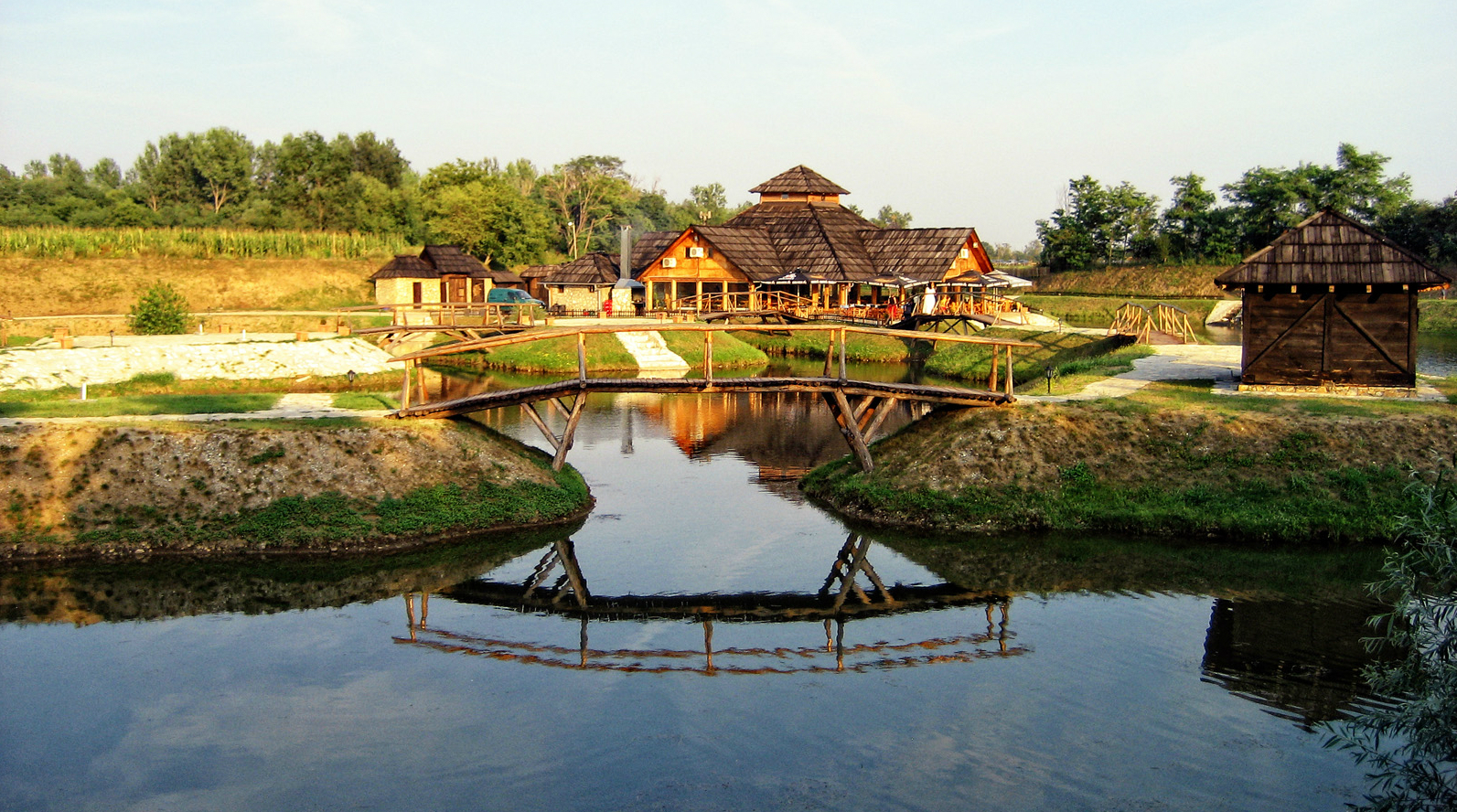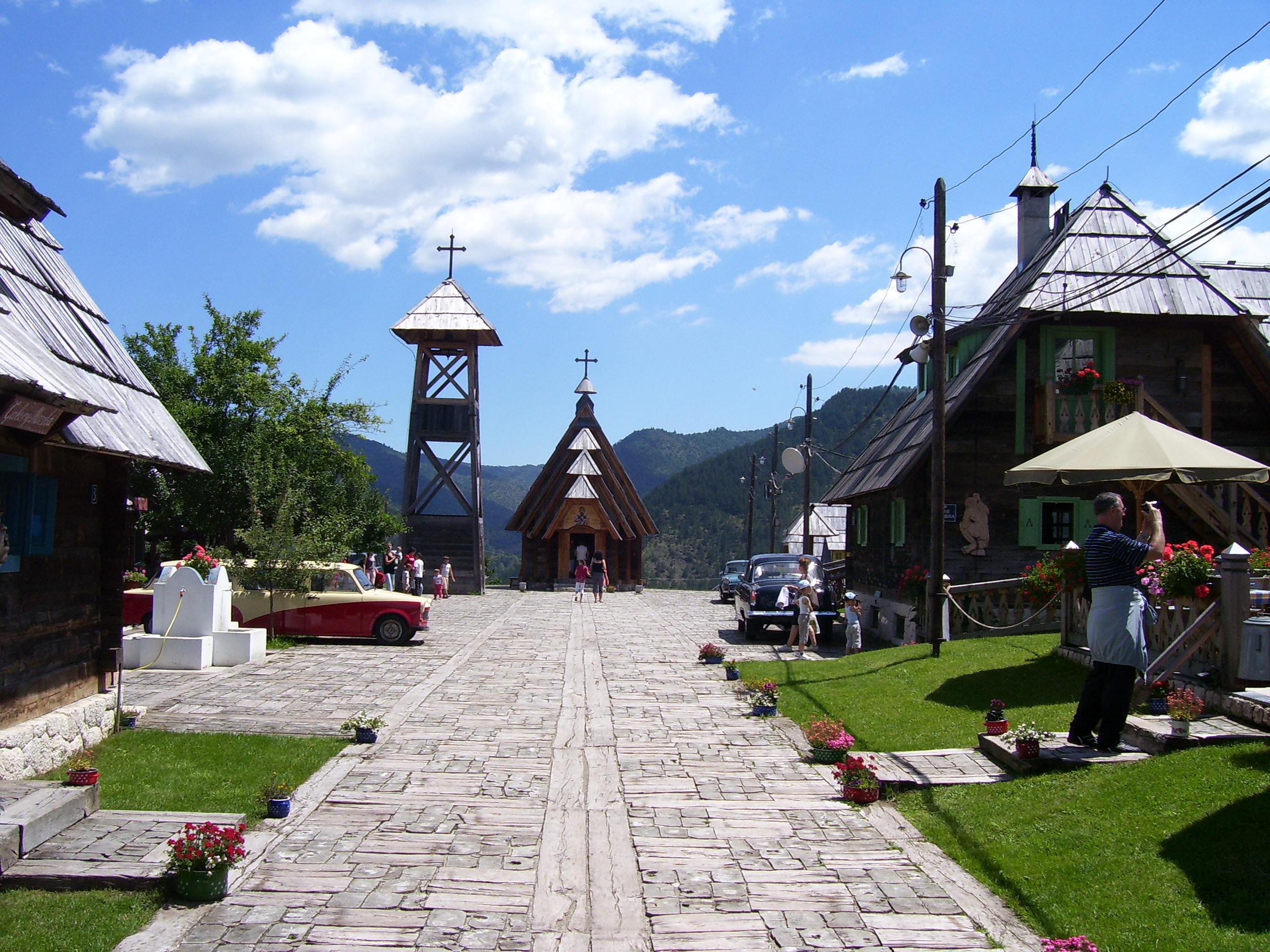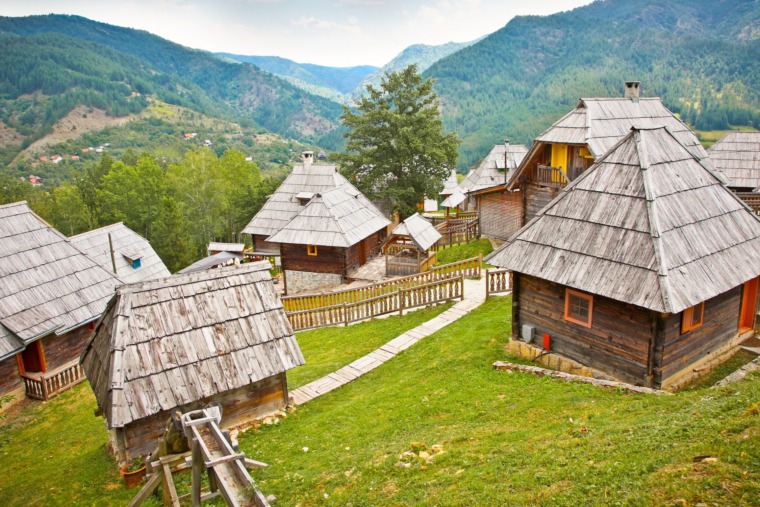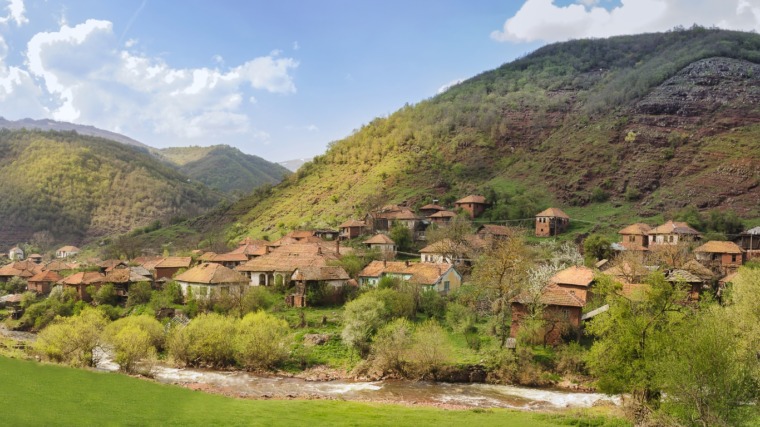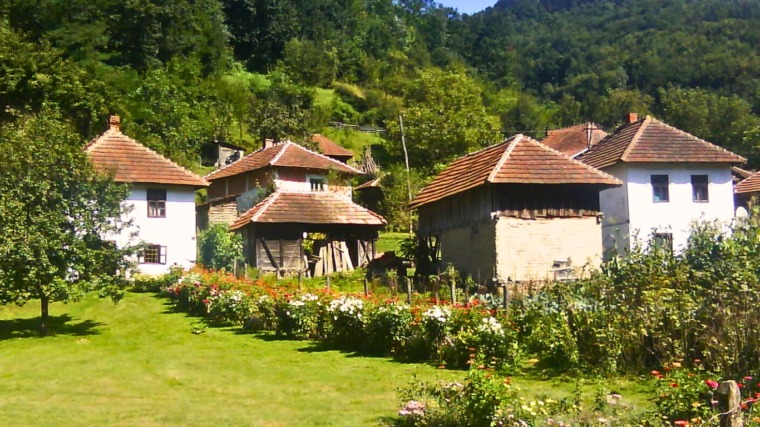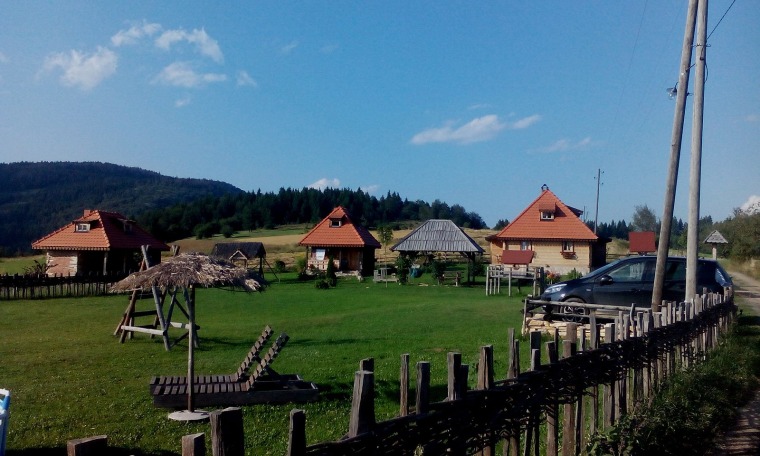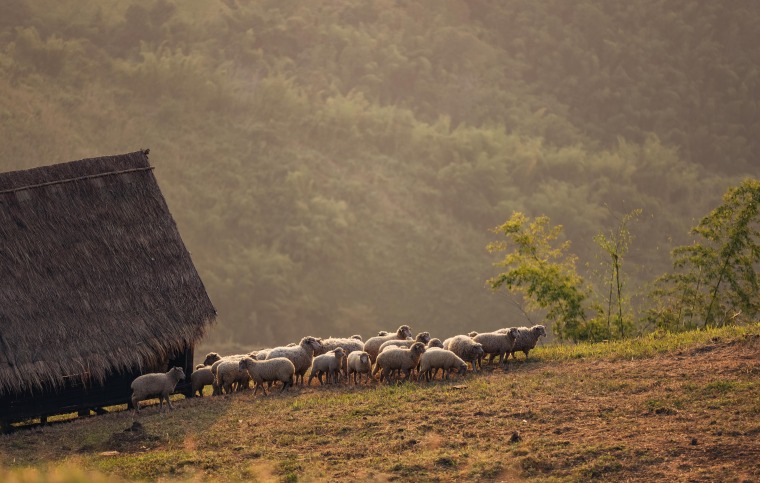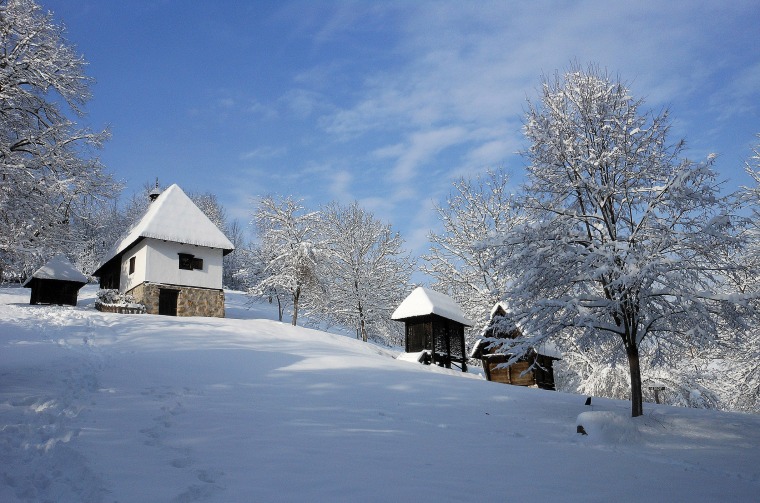In the “Terzića avlija” ethno village you can visit an open-air museum of Serbian history and ethnocultural heritage, learn how to make famous pottery, taste great dishes of Serbian cuisine and rest in modern suits set in a wonderful natural scenery
A monument of Serbian soldier carved out of ash tree, wearing traditional peasant footwear and a uniform dating from Balkan wars, and a statue made of walnut tree showing a potter from Zlakusa, both of them life size, are the trademark of “Terzića avlija”, an ethno village in Zlakusa, 185 km far from Belgrade. It is settled on a small hill not far from the village center, just beneath a beech forest.
As a whole, it is practically a museum representing a typical rural household from the Užice region at the end of the 19th and the beginning of the 20th century.
“Terzića avlija” is basically what was once a typical village yard, consisting of two old traditional houses (one is a hundred years old, made of adobe, with a tiled four-sided roof). The first was used for everyday life, while the second served as guest room and a place for special family celebrations (like “slava”, a patron-saint day).
These houses, built in 1907. and 1925, were transformed into a museum and today they host a vast collection of exhibits dating from different ages: the Roman period, time of Turkish reign, the Balkan wars, Principality and Kingdom of Serbia all the way through to the last Yugoslavia. Numerous items are also exhibited in front of these houses.
In another part of “Terzića avlija”, guests of the village can find an authentic picturesque garden, an inn that hosts 50 people, a bar next to a murmuring creek with cascades, a small pond and a 12 meter deep well with fresh water, but also a dairy, shed, farmstead, summer theater, shop with souvenirs and a base for mountaineers.
“Terzića avlija” also has two four-stared suits, both awarded with ECEATA certificate. One of them is built in a completely modern style and includes air condition, cable TV and central heating. Another follows the tradition of vernacular architecture (partly a log cabin, partly a wattle and daub house), and is furnished in ethno style.
Visiting mountaineers can accommodate in a cabin log with straw mattresses, or bring their own tents. If they don’t have any, tents are available for rent at the village. Also, there are 50 beds available in various households surrounding the ethno village.
Beside visiting the museum, guests of “Terzića avlija” can taste some home made juices and dishes of traditional Serbian cuisine prepared in the well-known crockery of the Zlakusa village, or learn the traditional making of pottery and crockery and take courses of folklore dancing.
How to get to “Terzića avlija”?
It seems that all roads lead to the Zlatibor area. The Zlakusa village and the “Terzića Avlija” ethno village are located only 185 km from Belgrade, half way between Požega and Užice.
If you are coming with your own transportation, the roads over Užice, Gornji Milanovac, Ivanjica and Zlatibor are at your disposal.
If you are coming from Belgrade the fastest way is to go over Lazarevac and then Valjevo or to take the longer way over Gornji Milanovac and Čačak.
If you are going by train or bus, all you need is to check the departure since there are regular bus and train lines from Belgrade to Užice, from where you will continue your journey with a local bus. Užice is on the Belgrade-Bar railroad.
Once you’re here already, don’t miss…
…hiking or cycling along marked paths that connect “Terzića avlija” with a number of waterfalls, Gradina peak and its pyramid shaped stone monument from World War II, the Potpeće cave, old watermills, fish ponds and restaurants by the Petnica river, and a watershed with viewpoints from which you can enjoy looking at the valley of Rzav river and the peaks of several beautiful mountains.
…paragliding on the surrounding mountain slopes or swimming in Rzav, the cleanest river in this part of Serbia.
…visiting a Roman stone bridge at Derventa river or a 13th century church in Godovik village.
“Terzića avlija” is considered a very convenient base for visiting sites at mount Zlatibor, ethno museum in Sirogojno, Emir Kusturica‘s “Drvengrad” (eng. Wooden town) ethno village and the Šargan eight railway in Mokra Gora nature park, the Rača monastery, the Kadinjača World War II memorial park, the log cabin church in Užice, the White church in Karan village, monasteries of the Ovčar-kablar gorge, mount Divčibare, the famous Guča brass festival etc.


